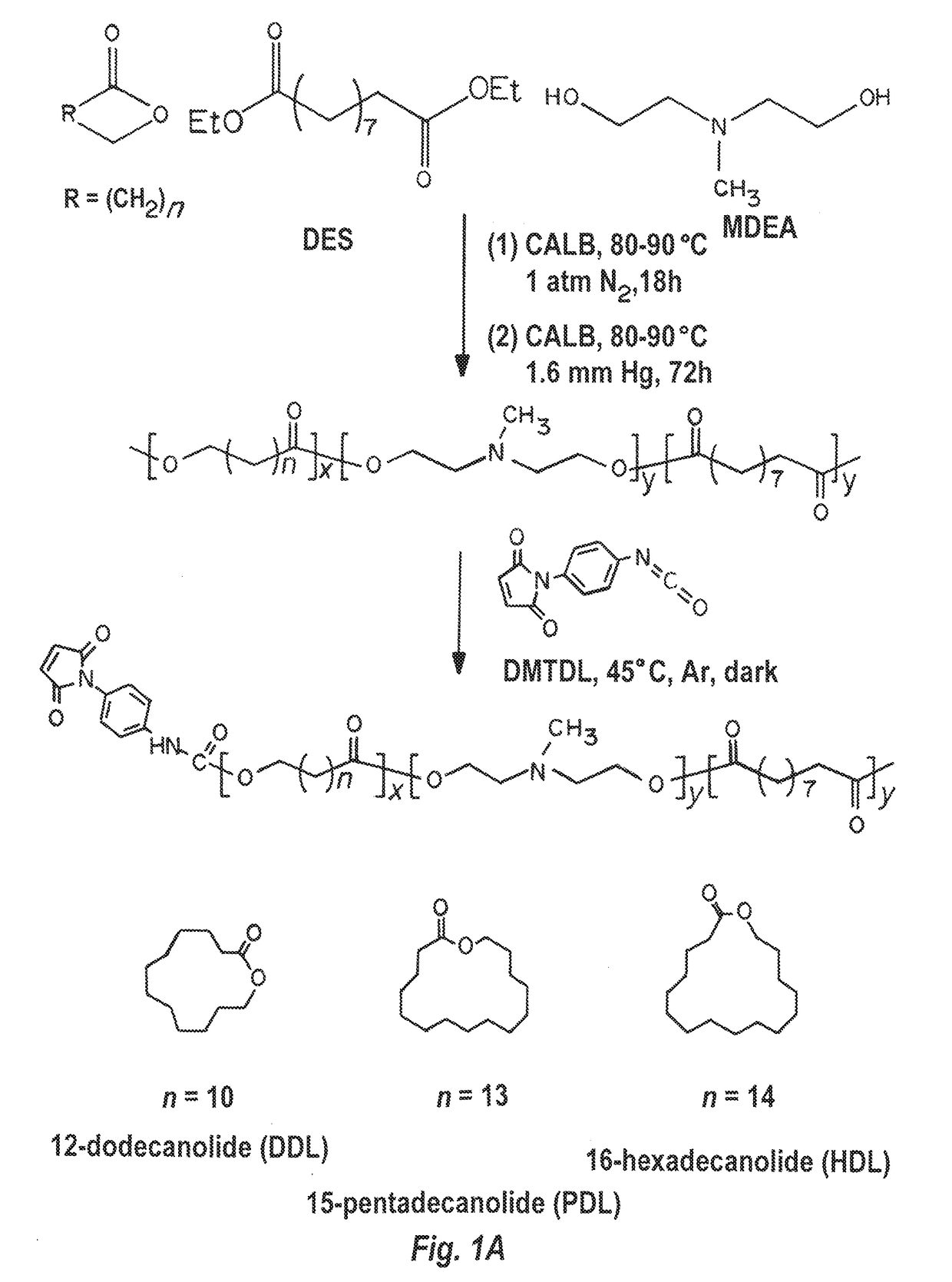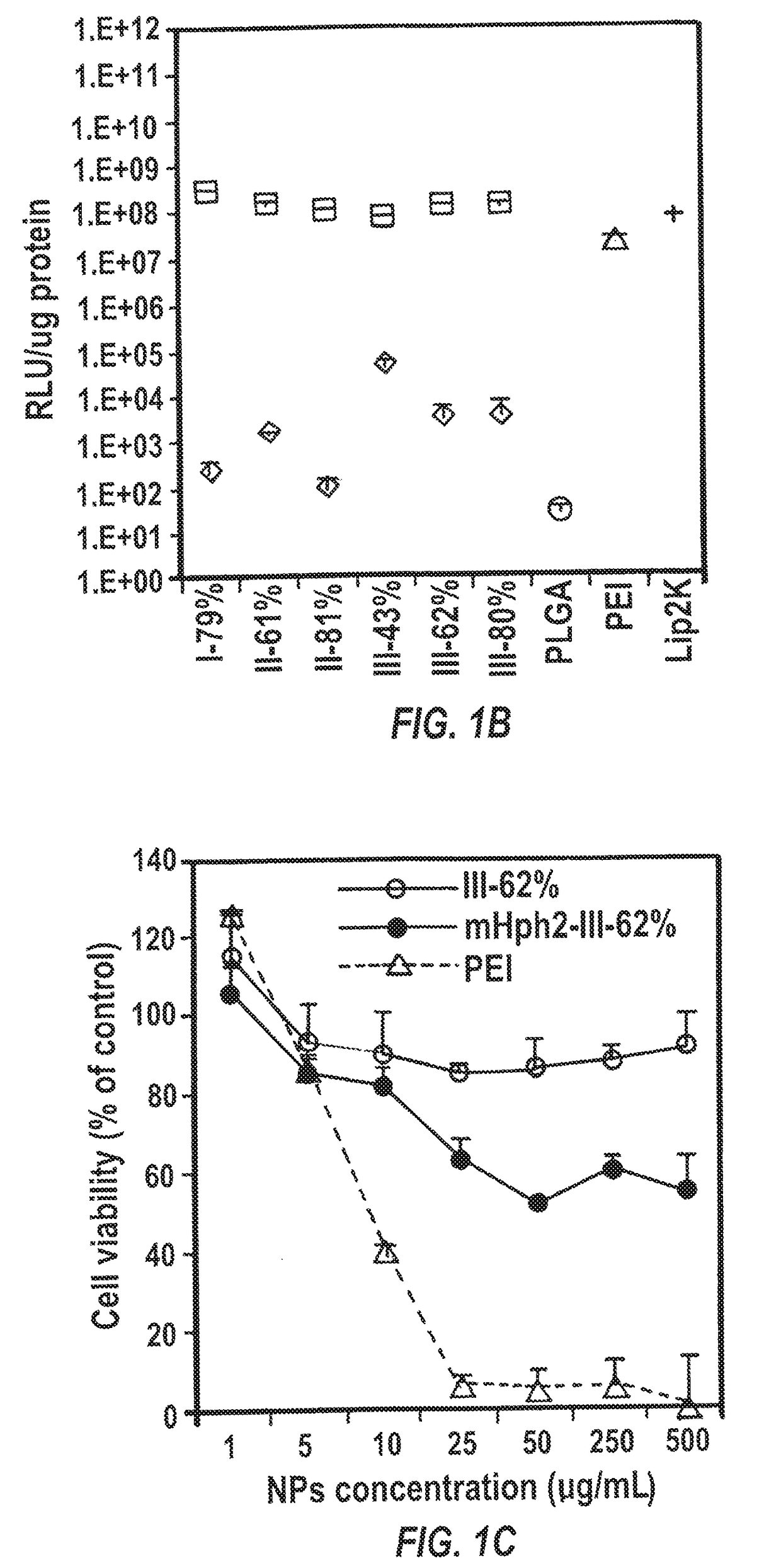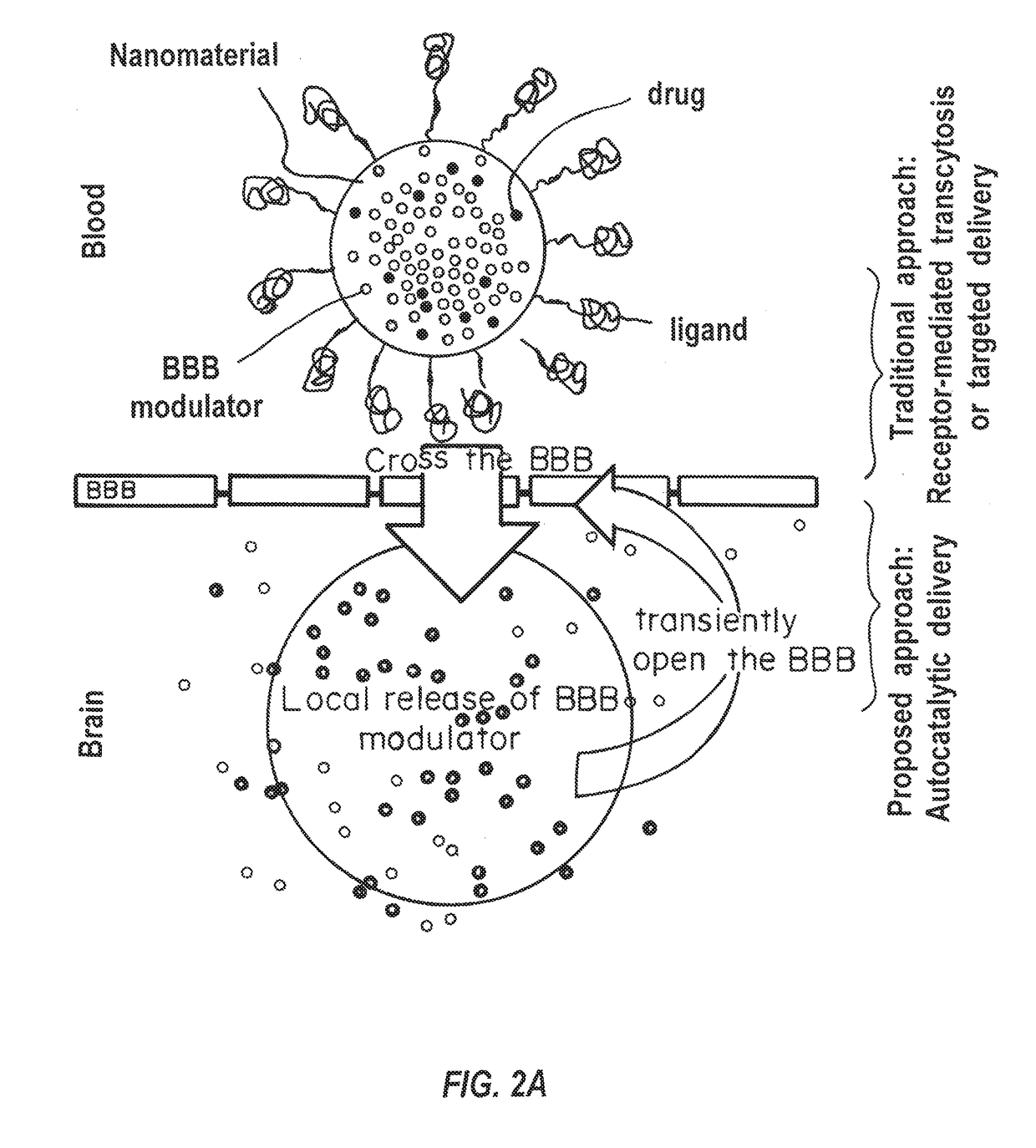Compositions for enhancing delivery of agents across the blood brain barrier and methods of use thereof
a technology of brain barrier and composition, applied in the direction of drug composition, cardiovascular disorder, microcapsules, etc., can solve the problems of limited application of gene therapy to brain tumors, hampered clinical utility of these approaches, and poor survival rate of most brain cancers, so as to improve the accumulation efficiency of nanocarriers in the brain, improve the delivery of active agents, and enhance the permeability of bbb to more nanocarriers
- Summary
- Abstract
- Description
- Claims
- Application Information
AI Technical Summary
Benefits of technology
Problems solved by technology
Method used
Image
Examples
example 1
of Solid Poly(Amine-Co-Ester) Terpolymers and Terpolymeric NPs
[0276]Materials and Methods
[0277]Materials
[0278]12-dodecanolide (DDL, 98%), 15-pentadecalactone (PDL, 98%), 16-hexadecanolide (HDL, 97%), diethyl sebacate (DES, 98%), N-methyldiethanolamine (MDEA, 99+%), diphenyl ether (99%), Candida Antarctica lipase B (CALB), poly(vinyl alcohol) (PVA, 87-90% hydrolyzed, average molecular weight 30,000-70,000), and branched polyethylenimine (PEI) (25 kDa) were purchased from Aldrich Chemical Co. p-Maleimidophenyl isocyanate (PMPI) was obtained from Pierce Chemical Co., Rockford, Ill. The lipase catalyst was dried at 50° C. under 2.0 mmHg for 20 h prior to use. Other reagents, if not specified, were purchased from Sigma-Aldrich. Luciferase expression plasmid, pGL4.13, was purchased from Promega. RFP expression plasmid, pPRIME-CMV-dsRed, was a gift from Stephen Elledge (Addgene plasmid #11658) (Stegmeier, F., et al., Proc Natl Acad Sci USA, 102: 13212-13217, doi:10.1073 / pnas.0506306102 (20...
example 2
ric NPs can Transfect Cells
[0295]Materials and Methods
[0296]Cell Culture
[0297]HEK293 cells, GL261 cells and U87-MG cells were obtained from American Type Culture Collection (ATCC, Rockville, Md., USA). Cells were grown in DMEM medium (Invitrogen) supplemented with 10% fetal bovine serum (FBS, Invitrogen), 100 units / mL penicillin, and 100 μg / mL streptomycin (Invitrogen) in a 37° C. incubator containing 5% CO2.
[0298]In Vitro Gene Transfection
[0299]HEK293 cells in 0.25 mL medium in the absence of antibiotics were plated in 48 well plates at a density of 3×104 cells / mL. The plasmid encoding luciferase pGL4.13 (Promega) was used to synthesize solid NPs for evaluating in vitro gene transfection. Transfection using Lipofectamine 2000 (Invitrogen) and PEI followed the standard protocols described in the manufacturer's manual. Briefly, Lipofectamine 2000 was mixed with DNA with the v / m ratio at 2.5 and then incubated at room temperature for 20 min before cell treatment. PEI (1 mg / mL in H2O) ...
example 3
e Targeted to Brain Tumors
Material and Methods
[0303]Preparation of CTX-mHph2-III-62% NPs
[0304]One hundred mg mIII-62% in 2 mL DCM was mixed with IR780 iodide (1 mg in 100 μL DMF, infrared fluorescence dye for imaging in vivo distribution). The organic solution was then added drop wise to 4 mL 2.5% PVA under vortex and solicited to form an oil / water emulsion. The emulsion was poured into a beaker containing 0.3% PVA and stirred for 3 h to allow DCM to evaporate and NPs to harden. NPs were collected by centrifugation at 20000 rpm for 30 min. The precipitate was suspended in PBS and reacted first with thiolated CTX (32 μg) for 1 h and then with excess cysteine-terminated peptide mHph2 (4 mg, 0.8 moll) for 1 h at room temperature for conjugation. The unreacted CTX and mHph2 were removed by centrifugation at 20,000 rpm for 30 min and the precipitate was suspended in H2O and lyophilized for storage and characterization.
[0305]In Vivo Distribution of Engineered Terpolymeric NPs
[0306]For the...
PUM
| Property | Measurement | Unit |
|---|---|---|
| diameter | aaaaa | aaaaa |
| diameter | aaaaa | aaaaa |
| diameter | aaaaa | aaaaa |
Abstract
Description
Claims
Application Information
 Login to View More
Login to View More - R&D
- Intellectual Property
- Life Sciences
- Materials
- Tech Scout
- Unparalleled Data Quality
- Higher Quality Content
- 60% Fewer Hallucinations
Browse by: Latest US Patents, China's latest patents, Technical Efficacy Thesaurus, Application Domain, Technology Topic, Popular Technical Reports.
© 2025 PatSnap. All rights reserved.Legal|Privacy policy|Modern Slavery Act Transparency Statement|Sitemap|About US| Contact US: help@patsnap.com



